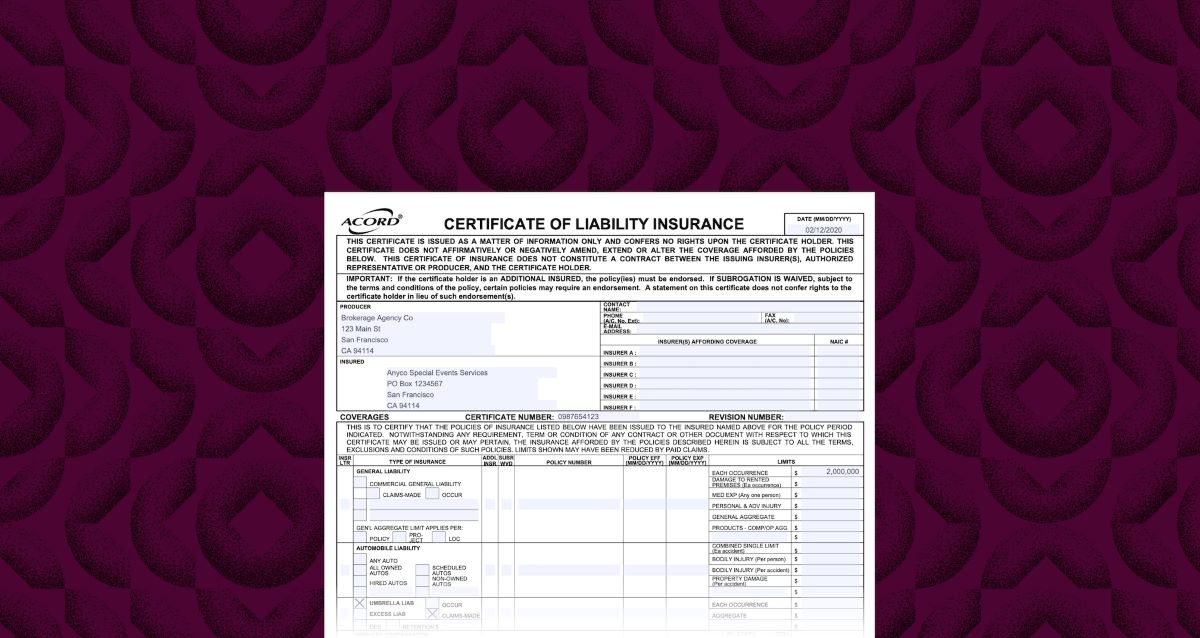

Finance
What Is Accounting Information
Published: October 9, 2023
Learn about the importance of accounting information in the realm of finance and how it impacts decision-making processes. Discover the role it plays in managing financial resources effectively.
(Many of the links in this article redirect to a specific reviewed product. Your purchase of these products through affiliate links helps to generate commission for LiveWell, at no extra cost. Learn more)
Table of Contents
- Introduction
- Definition of Accounting Information
- Importance of Accounting Information
- Types of Accounting Information
- Role of Accounting Information in Decision Making
- Sources of Accounting Information
- Methods of Gathering Accounting Information
- The Use of Technology in Accounting Information Systems
- Limitations of Accounting Information
- Conclusion
Introduction
Welcome to the fascinating world of accounting information! In today’s fast-paced business environment, reliable and accurate financial data is crucial for organizations to make informed decisions and maintain financial stability. Accounting information plays a vital role in tracking financial transactions, assessing performance, and providing valuable insights that drive strategic planning.
Accounting information can be defined as the systematic recording, analysis, and reporting of financial transactions. It involves the collection, organization, and interpretation of financial data to provide meaningful information for stakeholders, including managers, investors, creditors, and government entities.
In this article, we will delve into the significance of accounting information and its impact on decision-making. We will explore the different types of accounting information, discuss its sources and methods of gathering, as well as the role of technology in accounting information systems. Additionally, we will address the limitations of accounting information and how organizations can effectively leverage it to drive success.
Whether you’re a business owner, an investor, or simply curious about the financial landscape, gaining a fundamental understanding of accounting information is essential. By grasping its principles and applications, you will be better equipped to make sound financial decisions and navigate the complex world of finance.
So, let’s jump right in and explore the dynamic world of accounting information! Together, we will unravel its intricacies and discover its true value in today’s ever-evolving financial landscape.
Definition of Accounting Information
Accounting information refers to the financial data and reports generated by an organization’s accounting system. It encompasses a wide range of information that is essential for understanding the financial position, performance, and cash flow of a business.
The primary purpose of accounting information is to provide relevant and reliable financial information to internal and external users, allowing them to assess the organization’s financial health and make informed decisions. Internal users, such as managers and employees, rely on accounting information to plan, monitor, and control the organization’s activities. External users, including investors, creditors, and regulatory authorities, use accounting information to evaluate the company’s financial performance and determine its creditworthiness.
Accounting information is typically presented in the form of financial statements, such as the balance sheet, income statement, and cash flow statement. These statements provide a snapshot of the company’s financial position at a specific point in time and its performance during a particular period.
In addition to financial statements, accounting information also includes supporting documents and records, such as ledgers, journals, invoices, and receipts. These documents serve as evidence of financial transactions and provide a detailed trail of the organization’s financial activities.
Furthermore, accounting information goes beyond mere numerical values. It also includes qualitative information that helps interpret the financial data. This qualitative data may include management commentary, industry analysis, and other supplemental information that provides context and enhances the understanding of the financial statements.
Overall, accounting information is a vital tool for monitoring and assessing an organization’s financial health, performance, and cash flow. It serves as the foundation for making informed business decisions, formulating financial strategies, and ensuring compliance with regulatory requirements.
Importance of Accounting Information
Accounting information is of paramount importance to businesses, investors, creditors, and other stakeholders. It serves as a critical tool for decision-making and provides valuable insights into the financial health and performance of an organization. Here are some key reasons why accounting information is crucial:
1. Financial Performance Evaluation: Accounting information enables businesses to assess their financial performance accurately. Financial statements, such as the income statement and balance sheet, provide a comprehensive picture of revenues, expenses, assets, liabilities, and equity. By analyzing these statements, management can assess profitability, solvency, and liquidity, and make informed decisions to improve overall performance.
2. Planning and Budgeting: Accounting information plays a pivotal role in planning and budgeting activities. It provides historical data and financial forecasts that facilitate the development of realistic budgets and setting achievable financial goals. By analyzing past performance, businesses can identify trends, anticipate future expenses, and allocate resources effectively.
3. Decision-making: Sound decision-making relies on accurate and reliable information. Accounting information provides the necessary data for evaluating the viability of investments, assessing project profitability, and assessing the financial impact of various options. Decision-makers can rely on financial ratios, cost analysis, and budget reports to make informed choices that align with the organization’s objectives.
4. Stakeholder Communication: Accounting information serves as a common language for communicating financial details to stakeholders. Investors, creditors, and regulatory authorities rely on financial statements to evaluate a company’s financial position and make informed decisions. Clear and transparent accounting information enhances stakeholder confidence, promotes trust, and facilitates effective communication between the company and its stakeholders.
5. Compliance with Legal and Regulatory Requirements: Accounting information ensures compliance with legal and regulatory requirements. By maintaining accurate financial records and preparing financial statements in accordance with accounting principles and guidelines, organizations meet reporting obligations and avoid legal penalties. It also facilitates audits and enables organizations to demonstrate financial transparency and accountability.
6. Performance Evaluation and Incentive Systems: In businesses, accounting information is often used to assess the performance of individuals, departments, and divisions. It enables the design and implementation of performance evaluation systems and incentive programs that motivate employees to achieve specific financial targets.
In summary, accounting information is vital for monitoring financial performance, strategic planning, decision-making, stakeholder communication, legal compliance, and performance evaluation. By providing accurate and reliable financial data, accounting information helps organizations improve their financial health, make informed decisions, and achieve their goals.
Types of Accounting Information
Accounting information encompasses various types of data that are essential for financial analysis and decision-making. Here are the key types of accounting information:
1. Financial Statements: Financial statements are the primary source of accounting information. They provide an overview of a company’s financial position, performance, and cash flow. The main financial statements include the balance sheet, income statement, and cash flow statement. The balance sheet presents the company’s assets, liabilities, and equity at a specific date. The income statement shows the revenues, expenses, and net income for a specific period. The cash flow statement highlights the cash inflows and outflows over a given period.
2. Ratios and Financial Analysis: Ratios are mathematical calculations that provide insights into an organization’s financial health and performance. They are used to assess liquidity, profitability, efficiency, and solvency. Common ratios include the current ratio, debt-to-equity ratio, return on equity, and gross profit margin. Ratio analysis allows for comparisons over time and against industry averages to evaluate a company’s financial performance.
3. Budgets and Forecasts: Budgets and forecasts are essential tools for financial planning and control. They involve estimating future revenues and expenses, setting financial targets, and allocating resources accordingly. Budgets provide a roadmap for managing expenses, controlling costs, and achieving financial goals. Forecasts, on the other hand, are projections of future financial performance based on historical data and market trends.
4. Costing Information: Costing information relates to the calculation and analysis of costs associated with producing goods or providing services. It includes data on direct costs (such as materials and labor) and indirect costs (such as overhead). Costing information helps in pricing decisions, cost control, and profitability analysis.
5. Internal Control Information: Internal control information refers to the systems, processes, and procedures implemented within an organization to ensure the accuracy, reliability, and integrity of financial information. It includes internal controls over financial reporting, fraud prevention mechanisms, and segregation of duties. Internal control information helps to safeguard assets, detect errors or irregularities, and maintain the integrity of financial data.
6. Tax Information: Tax information includes records and data related to the calculation, reporting, and payment of taxes. It includes information on income taxes, sales taxes, payroll taxes, and other tax obligations. Maintaining accurate tax records is critical for compliance with tax laws and regulations.
7. Management Reports: Management reports provide detailed insights into various aspects of the company’s performance and operations. These reports can include budget variance analysis, cost analysis, sales reports, and performance dashboards. Management reports are tailored to the needs of managers and serve as a crucial tool for internal decision-making and performance evaluation.
These different types of accounting information collectively provide a comprehensive view of an organization’s financial position, performance, and operations. By utilizing and analyzing these types of information, businesses can make well-informed decisions, identify areas for improvement, and navigate the complex financial landscape.
Role of Accounting Information in Decision Making
Accounting information plays a pivotal role in the decision-making process of organizations. It provides valuable insights and data that assist managers, investors, and other stakeholders in making informed choices. Here are some key aspects highlighting the role of accounting information in decision making:
1. Strategic Planning: Accounting information is instrumental in strategic planning. By analyzing financial data, organizations can evaluate their current financial position, assess performance trends, and identify areas of improvement. This information helps in setting financial goals, formulating strategies, and allocating resources effectively.
2. Investment Decisions: Accounting information is crucial for evaluating potential investments. It provides data on the financial health and performance of companies, allowing investors to assess the viability and profitability of investment opportunities. Accounting information helps in analyzing financial ratios, assessing cash flow projections, and understanding the risks and rewards associated with an investment.
3. Budgeting and Resource Allocation: Accounting information is vital for budgeting and resource allocation decisions. By analyzing historical financial information, organizations can estimate future expenses, forecast revenue, and set realistic budgets. This information helps in allocating resources efficiently, controlling costs, and optimizing financial performance.
4. Performance Evaluation: Accounting information serves as a benchmark for performance evaluation. It provides data on key financial indicators, such as profitability, liquidity, and solvency, which are used to measure and compare performance against goals and industry standards. By analyzing financial statements and reports, managers can evaluate individual departments, projects, or products and make adjustments to improve performance.
5. Risk Management: Accounting information assists in risk management by providing insights into potential financial risks and vulnerabilities. It helps in identifying areas of financial weakness, anticipating cash flow challenges, and evaluating the impact of different scenarios on financial stability. This information enables organizations to develop risk mitigation strategies, implement internal controls, and make informed decisions to mitigate financial risks.
6. Compliance and Regulatory Obligations: Accounting information ensures compliance with legal and regulatory requirements. It helps organizations adhere to accounting standards, financial reporting guidelines, and tax regulations. By maintaining accurate and reliable financial records, organizations can meet their reporting obligations, avoid legal penalties, and build trust with stakeholders.
7. Stakeholder Communication: Accounting information plays a critical role in communicating financial performance to stakeholders. It helps in preparing financial statements, reports, and disclosures that present a clear and accurate picture of the company’s financial standing. Effective communication of accounting information enhances stakeholder confidence, supports investor relations, and facilitates decision-making collaboration.
In summary, accounting information is a valuable tool for decision making. It provides data and analysis that help in strategic planning, investment decisions, budgeting, performance evaluation, risk management, compliance, and stakeholder communication. By utilizing accounting information effectively, organizations can make well-informed decisions, optimize their financial performance, and achieve their strategic goals.
Sources of Accounting Information
Accounting information is derived from various sources, each contributing valuable data to the financial reporting and decision-making process. Here are some primary sources of accounting information:
1. Financial Transactions: The most fundamental source of accounting information is financial transactions. These transactions include the buying and selling of goods and services, payments and receipts, borrowing and lending, and other financial activities. Through accurate recording and documentation of these transactions, accounting systems generate essential data for financial statements.
2. Invoices and Receipts: Invoices and receipts serve as primary evidence of business transactions. Invoices document sales transactions, while receipts validate payments received. These documents provide crucial information such as the date of the transaction, the amount involved, and the parties involved. Invoices and receipts form the foundation for accurate recording of revenue and expenses.
3. Bank Statements: Bank statements provide a comprehensive record of an organization’s financial activities. They show all incoming and outgoing funds, including deposits, withdrawals, and payments. Bank statements help in reconciling accounts, verifying transactions, and maintaining accurate financial records.
4. Purchase and Sales Orders: Purchase and sales orders are critical sources of accounting information, particularly for inventory-based businesses. These documents detail the goods ordered or sold, quantities, prices, and payment terms. Purchase and sales orders provide crucial information for recording inventory costs, tracking sales revenue, and managing accounts payable and receivable.
5. Payroll Records: Payroll records provide information about employee compensation, including wages, salaries, bonuses, and tax withholdings. These records are essential for accurately recording employee expenses, calculating payroll taxes, and complying with labor laws and regulations.
6. Contracts and Agreements: Contracts and agreements serve as important sources of accounting information, particularly for long-term engagements. They provide details on the rights and obligations of the parties involved, payment terms, and other financial arrangements. Contracts and agreements are critical for recognizing revenue, recording expenses, and ensuring compliance with contractual obligations.
7. Internal Records: Internal records within an organization, such as general ledgers, journals, and subsidiary ledgers, form a significant source of accounting information. These records track and summarize financial transactions chronologically or by specific accounts. They provide a comprehensive view of an organization’s financial activities, allowing the preparation of accurate financial statements.
8. External Sources: External sources of accounting information include market research reports, industry analysis, economic reports, and regulatory publications. These external sources provide valuable insights into market trends, industry benchmarks, and regulatory changes. Incorporating external information into financial analysis helps organizations make informed decisions and adapt to the dynamic business environment.
By leveraging these diverse sources of accounting information, organizations can capture a comprehensive view of their financial activities, ensure accurate financial reporting, and make informed decisions for strategic planning and growth.
Methods of Gathering Accounting Information
The gathering of accounting information is a crucial step in the accounting process. It involves collecting, organizing, and recording financial data to generate accurate financial statements and reports. Here are some common methods used to gather accounting information:
1. Manual Entry: Manual entry is a traditional method of gathering accounting information. It involves physically inputting financial data into accounting records, such as ledgers, journals, and spreadsheets. This method requires meticulous attention to detail and accuracy to ensure that all the relevant information is recorded correctly.
2. Source Documents: Source documents, such as invoices, receipts, bank statements, and purchase orders, serve as the primary sources of accounting information. These documents provide specific details about financial transactions, including dates, amounts, parties involved, and descriptions of goods or services. Collecting and retaining source documents is essential for accurate record-keeping and audit purposes.
3. Electronic Data Entry: With the advancements in technology, electronic data entry has become a popular method for gathering accounting information. It involves the use of accounting software or enterprise resource planning (ERP) systems to input and store financial data. Electronic data entry reduces manual errors, improves efficiency, and provides real-time access to financial information.
4. Bank Feeds: Many accounting software packages offer bank feed integration, allowing direct access to the organization’s bank accounts. Bank feeds automatically import bank transactions into the accounting system, eliminating the need for manual data entry. This method ensures accurate and up-to-date financial information, streamlining the reconciliation process.
5. Point of Sale (POS) Systems: For businesses involved in retail or sales, POS systems play a crucial role in gathering accounting information. These systems automatically record sales transactions, capturing important details such as the date, time, items sold, and payment method. POS systems streamline the process of collecting data, ensuring accurate sales records and inventory management.
6. Electronic Data Interchange (EDI): EDI is an electronic method of exchanging business documents between two entities. It enables the seamless transfer of accounting information, such as purchase orders, invoices, and payments, between suppliers and customers. EDI eliminates the need for manual data entry, reducing errors and increasing efficiency in gathering accounting information.
7. Periodic Inventory Counts: Physical inventory counts are essential for businesses that maintain inventory. Counting and valuing inventory periodically provide accurate information for recording inventory costs and determining the cost of goods sold. Various methods, such as the periodic and perpetual inventory systems, can be used to gather inventory-related accounting information.
8. Internal Controls: Implementing effective internal controls ensures the accuracy and reliability of accounting information. Internal controls involve establishing procedures and policies for data gathering, verifying authenticity, and maintaining data integrity. By having strong internal controls in place, organizations can mitigate the risk of errors, fraud, and inconsistencies in the accounting information.
It is important for organizations to select the appropriate methods for gathering accounting information based on their operational needs, industry requirements, and available resources. By utilizing efficient and accurate methods, businesses can ensure the integrity of their financial records, facilitate informed decision-making, and comply with regulatory obligations.
The Use of Technology in Accounting Information Systems
The advent of technology has revolutionized the field of accounting, profoundly impacting the way organizations gather, process, and utilize accounting information. Technology-driven accounting information systems (AIS) have streamlined processes, enhanced accuracy, and provided real-time insights into financial data. Here are some key ways in which technology has transformed AIS:
1. Automation of Data Entry: Technology has automated the process of data entry, reducing the reliance on manual data input. Accounting software and electronic data interchange (EDI) systems allow for seamless integration of financial data from various sources. This automation not only saves time but also improves accuracy by minimizing human errors associated with manual data entry.
2. Cloud Computing and Remote Access: Cloud-based accounting solutions have revolutionized the accessibility of accounting information. With cloud computing, accounting data is stored securely in a remote server, allowing authorized users to access it anytime, anywhere, and from any device. This remote access enables real-time collaboration, enhances decision-making, and facilitates efficient financial management.
3. Real-time Financial Reporting: Technology has enabled organizations to generate real-time financial reports, providing up-to-date insights into the company’s financial position. With instant access to financial data, organizations can make timely decisions, identify trends, and respond quickly to changes in the business environment. Real-time financial reporting enhances financial transparency and enables proactive financial management.
4. Integration with Other Systems: Technology has facilitated the integration of accounting information systems with other business systems. Integration with customer relationship management (CRM) systems, inventory management systems, and point of sale (POS) systems allows for seamless flow of data, reducing errors, and improving efficiency. Integrated systems provide a holistic view of business operations, enabling better analysis and decision-making.
5. Data Analytics and Business Intelligence: The use of technology in AIS has unlocked the power of data analytics and business intelligence. Advanced analytical tools and algorithms can analyze large volumes of financial data, identify patterns, and generate meaningful insights. Data analytics enhances financial forecasting, cost analysis, and strategic planning, enabling organizations to make data-driven decisions.
6. Enhanced Security and Data Protection: Technology has significantly improved the security and integrity of accounting information. Robust digital security measures, such as encryption, authentication, and access controls, protect sensitive financial data from unauthorized access and cyber threats. Regular data backups and disaster recovery plans ensure the continuity and reliability of accounting information in the event of system failures or data loss.
7. Mobile Applications: The proliferation of mobile applications has brought accounting information to the fingertips of users. Mobile accounting apps enable users to perform various accounting tasks, such as invoicing, expense tracking, and bank reconciliations, on their smartphones or tablets. Mobile accessibility improves productivity, empowers small businesses, and facilitates on-the-go financial management.
Overall, the use of technology in accounting information systems has transformed the way organizations gather and utilize financial data. It has increased efficiency, accuracy, and accessibility, empowering organizations to make informed decisions, drive financial performance, and adapt to the rapidly evolving business environment.
Limitations of Accounting Information
While accounting information provides valuable insights into an organization’s financial position, performance, and cash flow, it is important to recognize its limitations. Understanding these limitations helps stakeholders interpret and use accounting information effectively. Here are some key limitations to consider:
1. Historical Emphasis: Accounting information primarily focuses on recording and reporting past financial transactions. It is rooted in historical data and does not capture real-time or future-oriented information. Decision-makers must supplement accounting information with other sources, such as market research or industry analysis, for a comprehensive understanding of the business environment.
2. Subjectivity and Bias: The preparation of financial statements and accounting information involves subjective choices and judgments. Accounting policies, estimation techniques, and assumptions can vary across companies, potentially leading to inconsistencies and bias in reported figures. Different accounting methods employed by organizations can make it challenging to compare financial data between companies accurately.
3. Lack of Non-Financial Information: Accounting information primarily focuses on financial aspects, with limited insight into non-financial factors such as employee satisfaction, customer loyalty, or environmental impact. These non-financial aspects can also influence decision-making and organizational performance, highlighting the need for a comprehensive approach that incorporates both financial and non-financial metrics.
4. Measurement Limitations: Accounting relies on specific measurement techniques and principles, which may not capture the true value or economic substance of certain assets, liabilities, or transactions. For example, historical cost accounting may not reflect the current market value of assets. These limitations can impact decision-making accuracy and the overall relevance of the financial information.
5. Potential for Manipulation: Accounting information is susceptible to manipulation and misrepresentation, posing risks to stakeholders relying on financial statements for decision-making. Financial statement fraud, creative accounting practices, and biased reporting can distort the accuracy and reliability of accounting information. Regulatory safeguards and independent audits help mitigate these risks but may not eliminate them entirely.
6. Lack of Information about Intangible Assets: Accounting information may not adequately capture the value of intangible assets, such as intellectual property, brand reputation, or human capital. These assets are critical drivers of value and competitiveness in today’s knowledge-based economy. The omission of such valuable intangible assets can lead to an incomplete picture of a company’s true worth.
7. A Simplified Perspective: Financial statements provide summarized information that condenses complex business operations into simplified figures. While this simplification facilitates comparability and understandability, it may oversimplify the intricacies of the business. Decision-makers should consider the potential limitations of oversimplification and seek additional context or analysis when necessary.
Despite these limitations, accounting information remains a valuable tool for assessing financial performance and making informed decisions. Understanding the constraints and considering the broader context can enhance the effective use of accounting information, promoting a more comprehensive understanding of organizational performance.
Conclusion
Accounting information plays a vital role in the financial management and decision-making processes of organizations. It provides invaluable insights into an organization’s financial health, performance, and cash flow. By analyzing accounting information, stakeholders can make informed decisions, allocate resources efficiently, and monitor financial performance.
Throughout this article, we explored the definition and importance of accounting information, its various types, and the role it plays in decision-making. We discussed how accounting information is gathered from sources such as financial transactions, invoices, bank statements, and internal records. We also highlighted the use of technology in accounting information systems, the limitations of accounting information, and the need to consider other factors beyond financial data.
It is important to recognize that accounting information has its limitations. It focuses on historical data, may be subjective, and lacks information about non-financial factors. It is crucial to understand these limitations and supplement accounting information with additional sources to gain a comprehensive understanding of the business environment.
Despite its limitations, accounting information remains an essential tool for stakeholders in making informed financial decisions. It provides valuable insights into a company’s financial position, allows for effective planning and budgeting, supports performance evaluation, and facilitates compliance with legal and regulatory requirements.
As technology continues to advance, we can expect further improvements in the gathering, processing, and utilization of accounting information. Cloud computing, automation, and data analytics will enhance the accessibility, accuracy, and timeliness of financial data, empowering organizations to make more informed and agile decisions.
In conclusion, accounting information is a cornerstone of financial management. It provides a basis for decision-making, enables performance evaluation, and facilitates communication with stakeholders. While accounting information has its limitations, recognizing these limitations and utilizing it in conjunction with other data sources can lead to well-informed decisions and improved financial outcomes.














